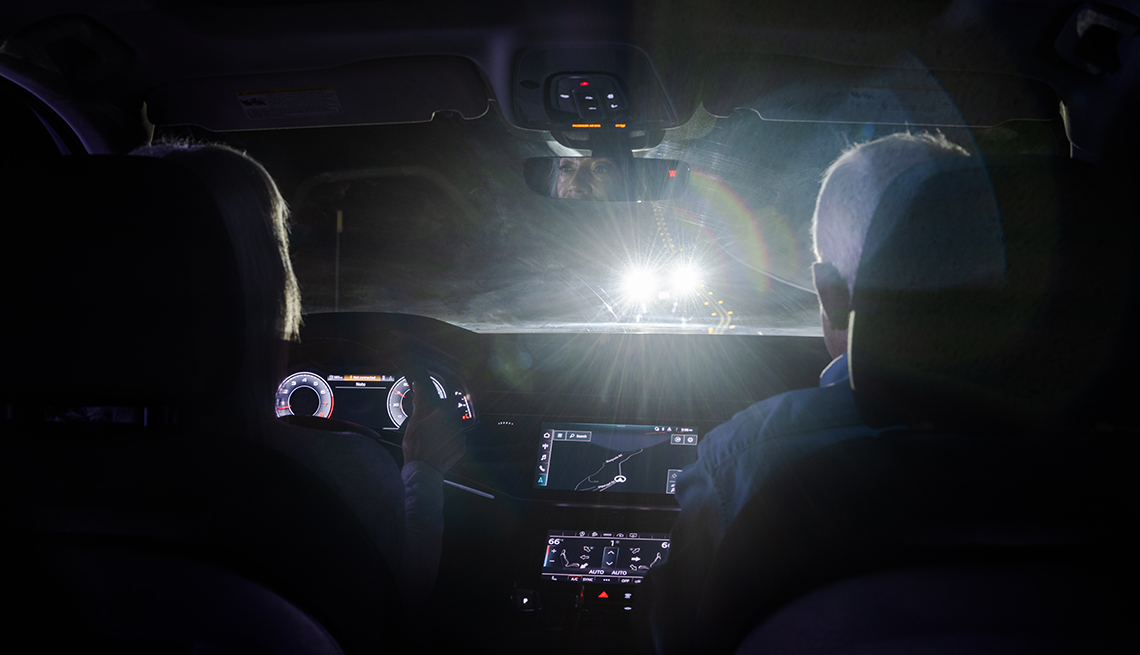Why People Have Difficulty Driving at Night
Why People Have Difficulty Driving at Night"
- Select a language for the TTS:
- UK English Female
- UK English Male
- US English Female
- US English Male
- Australian Female
- Australian Male
- Language selected: (auto detect) - EN
Play all audios:
Half of all fatal car crashes happen after dark, according to data from the National Safety Council — even though only 25 percent of driving happens then. Drivers are less likely to wear
seat belts at night, more often under the influence of alcohol, and more prone to be fatigued. But there’s another big problem, one that particularly affects older drivers: vision. OUR EYES
AGE RIGHT ALONG WITH US Humans are born with two types of photoreceptors in their eyes: rods and cones. In the daytime, we utilize cones — the structures that allow us to see color. With
the onset of night, however, we shift to a mix of rods and cones; in very, very low light, we rely entirely on rods — which is why, in the darkness, everything appears black and white. “When
you age, you start to lose rod photoreceptors before you lose cone photoreceptors,” says Cynthia Owsley, the chair of ophthalmology at the University of Alabama at Birmingham. So while our
vision in daylight may be just fine, our night vision becomes less acute. In people with age-related macular degeneration, this process is even more pronounced, she notes. At the same time,
our pupils, which regulate how much light enters our eyes, shrink with age, says John Bullough, program director at the Light and Health Research Center at Mount Sinai Hospital’s Icahn
School of Medicine in New York City. “The older we are, the smaller our pupils are,” he says. “Even for the same light level, there’s less light getting inside our eyeball.” By the time we
hit our 60s, he adds, the backs of our eyes are receiving only one-third the light they did when we were 20. “The world just gets darker, day by day,” he says. “The only reason we don’t
notice it is because it’s so gradual.” As we age, we also become less sensitive to changes in contrast and thus less able to distinguish objects — like road signs or pedestrians — from their
background. And the darker it gets, the more challenged our sight becomes, especially when it’s a question of spotting objects along the side of the road. A study by the University of
Michigan Transportation Research Institute found that pedestrian fatalities were 22 percent more likely to occur on nights when there was a new — and essentially invisible — moon than on
brighter nights with a full moon. Plus, in low-contrast conditions, it’s difficult to estimate how fast objects, such as other cars, are moving, and our reaction times are slowed. What’s
more, by the time we reach our late 50s, nearly 1 in 10 of us will suffer from cataracts — a blurring caused by a buildup of protein on the disclike lenses behind our pupils. By the time we
hit our 80s, more than half of us will have cataracts. “Everyone who lives long enough, whether their eyes are healthy or not, will experience cataracts,” Bullough says. INVEST IN QUALITY
HEADLIGHTS The good news is that headlights are, in some cases, getting better at lighting the road ahead of us. A testing initiative by the Insurance Institute for Highway Safety (IIHS) has
found that vehicles equipped with top-rated headlights have 19 percent fewer nighttime crashes than do cars with lower-rated lights. As opposed to older headlights, which use a halogen bulb
backed by a reflective surface, the best new headlights use LED bulbs with a so-called projector lens, explains Matt Brumbelow, a senior research engineer with the IIHS. “Now you can have a
much better beam pattern that gets enough light onto the road,” he says.
Trending News
Kobe bryant, the influencer | thearticleJust over a week ago, on Sunday night, we learned of the death of Kobe Bryant. He had been killed alongside his 13-year-...
History repeats as battle moves from grandpas to grandsons in karnataka's hassanBut a senior BJP leader, who wished not to be named, said the BJP-JDS alliance will be an advantage for Prajwal as a lar...
The page you were looking for doesn't exist.You may have mistyped the address or the page may have moved.By proceeding, you agree to our Terms & Conditions and our ...
Carrie symonds is no ordinary prime ministerial consort | thearticleA quick Google search of Carrie Symonds’ name will result in a steady stream of pieces over the past few weeks about the...
Frontline | facing death: excerpt one: mount sinai icu | season 2010 | episode 17Clip: Season 2010 Episode 17 | 3m 26s In FRONTLINE's Facing Death a family discusses taking their loved one off of ...
Latests News
Why People Have Difficulty Driving at NightHalf of all fatal car crashes happen after dark, according to data from the National Safety Council — even though only 2...
Fragile borders - the statesmanAadhaar, India’s biometrics-based nationalidentity system, has definitely been a gamechanger in the delivery of our publ...
Intraday Data provided by FACTSET and subject to terms of use. Historical and current end-of-day data provided by FACTSET. All quotes are in local excIntraday Data provided by FACTSET and subject to terms of use. Historical and current end-of-day data provided by FACTSE...
Survey datasets and question searchAARP Research is pleased to partner with the Roper Center for Public Opinion Research to offer access to their "Par...
It's time to free ourselves from the dead weight of excessive regulation | thearticleI am not a conspiracy theorist and I do not share the widespread assumption that most of our politicians are venal. Our ...
